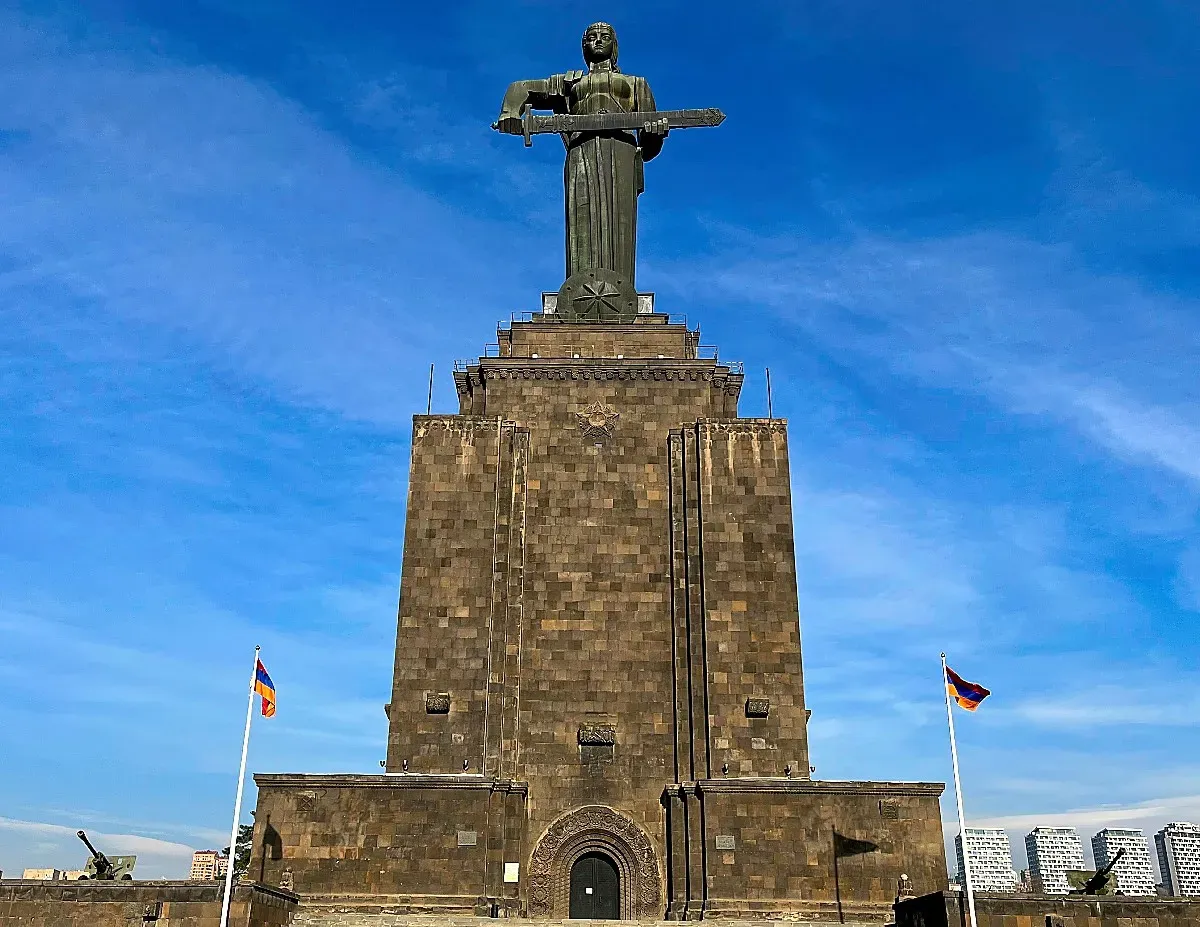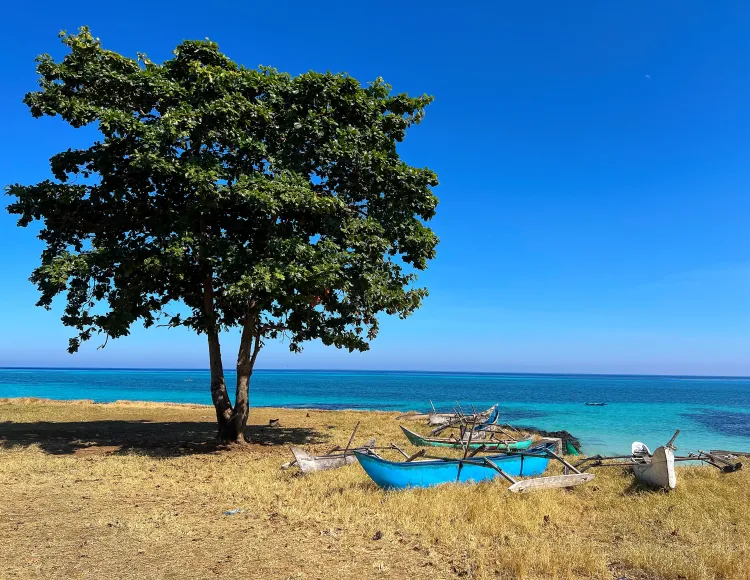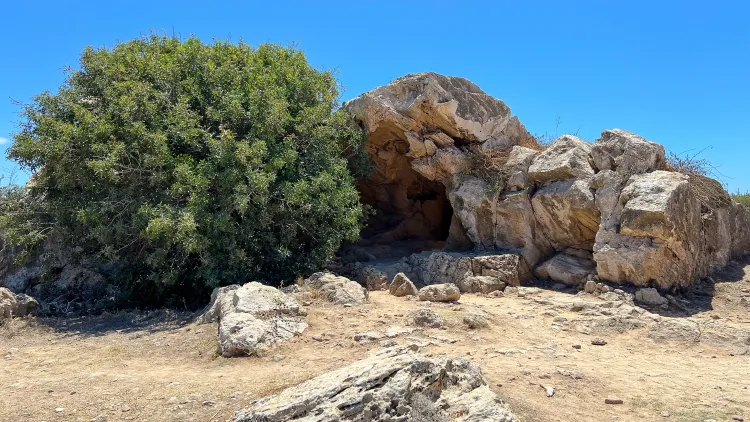Journal #41 - Armenia
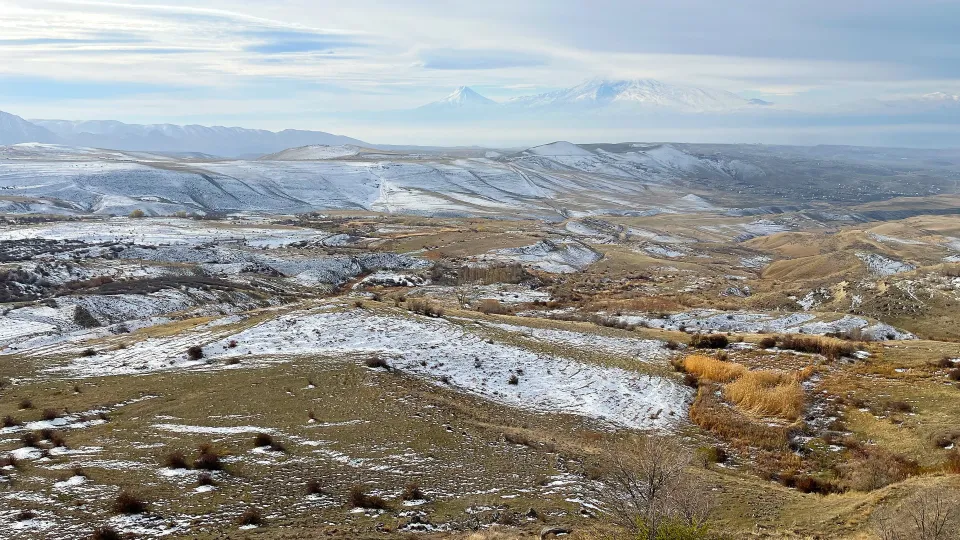
Barev dzez (Բարև ձեզ) from Armenia!
We arrived in the nation of Armenia via a night train. This meant that we had our first border check on a train. We have crossed borders via train before but always within the Schengen Zone, so there were no passport checks. On the Georgian side, we had to exit the train and stand in line; however, on the Armenian side, the border agents came to us. This was warmer; however, the questions were probably some of the most thorough we have experienced at any border we have been to. The examination we received was partially on us since our passports were stamped with our previous visit to Azerbaijan. It was all rather anticlimactic though, and as soon as they stamped our passports a train attendant came around and started turning out lights so that we could rest.
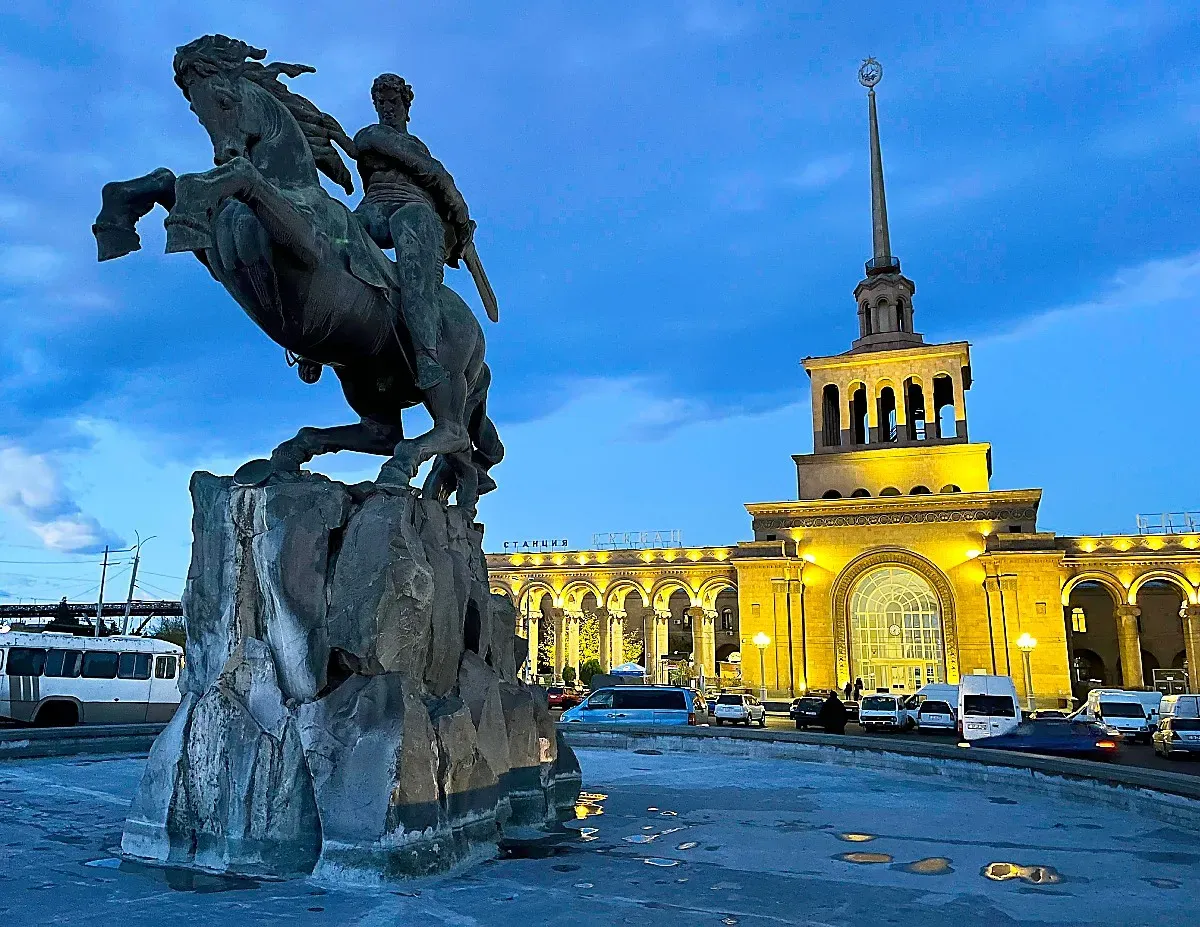
We used our visit to Armenia to see some monasteries that surprised us with their gravitas and beauty, royal residences set on the mountainside, and even an unexpected stop at the Symphony of Stone.
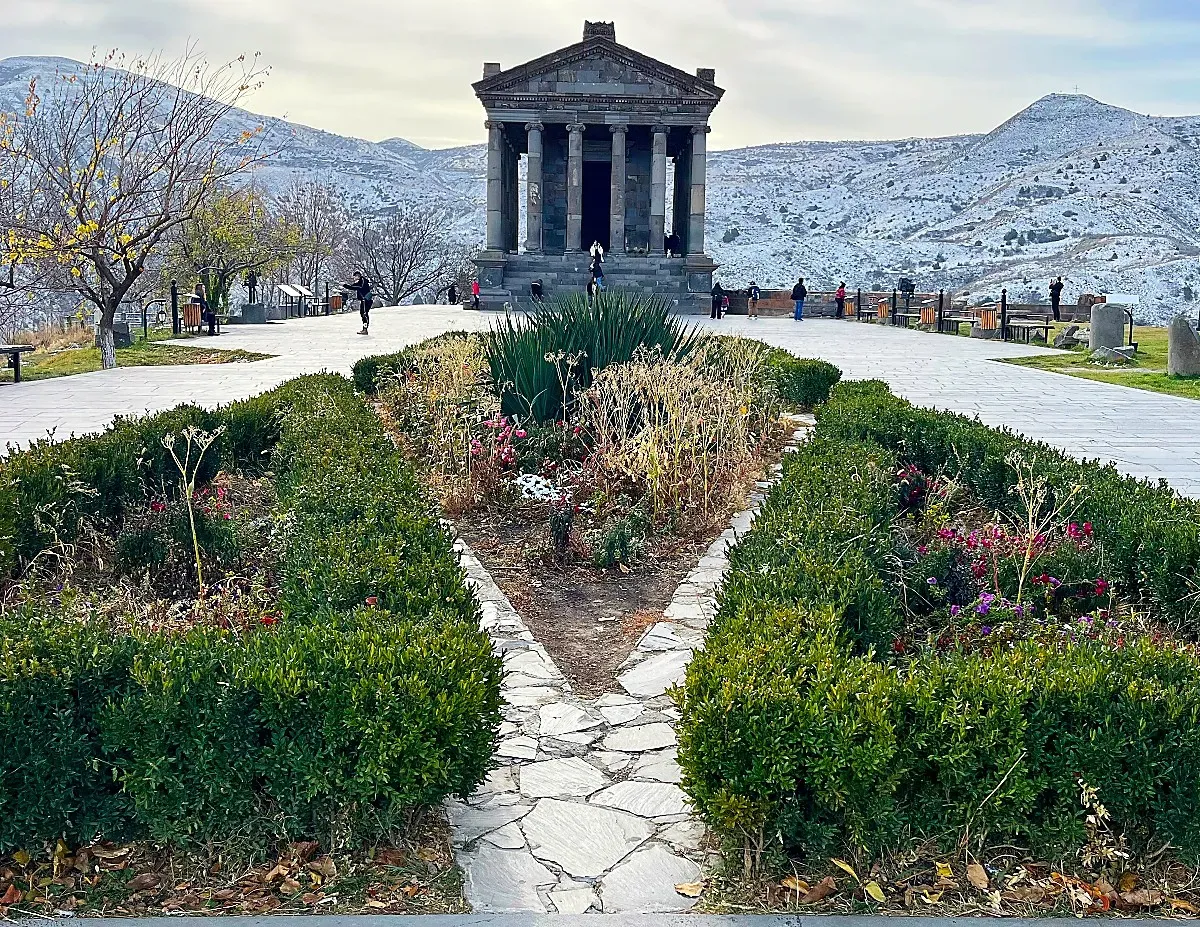
The first on that list was a visit to the Garni Temple. Originally built in honor of a sun god, when Armenia converted its national religion to Christianity the temple was converted as well. These ruins are located with a view on three sides of the valley. A perfect location for escaping the city’s summer heat and taking full advantage of the breezes to cool when it was used as a seasonal residence. This is considered the “easternmost building of the Greco-Roman world” and it stood out against the other architecture of the area. It was also pleasing to find the remains of a mosaic in what was probably the bathhouse also located on this outcrop.
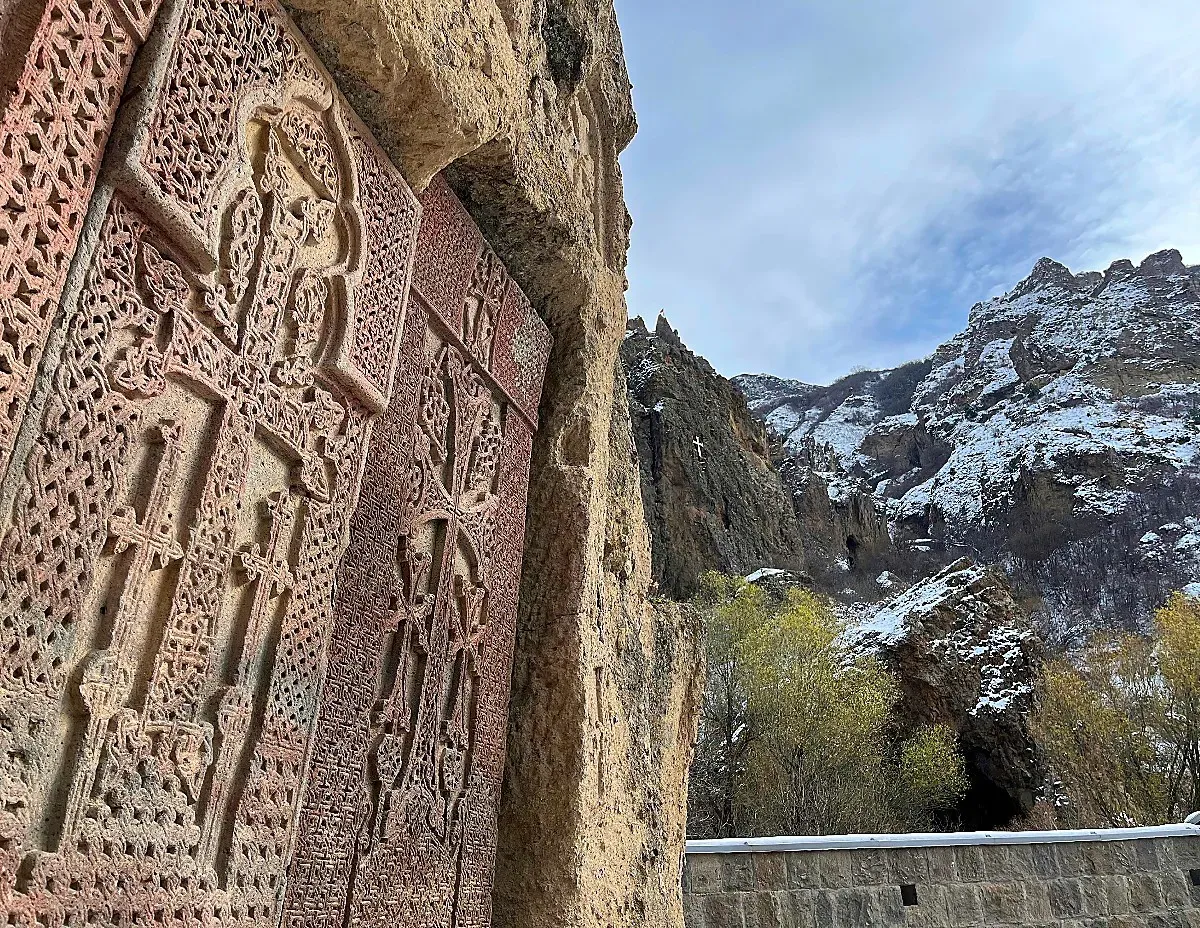
After Garni, we progressed to the Geghard Monastery. This unassuming structure presented us with a handful of surprises. Firstly, the construction made it such that the air cooled and the sound was dampened upon entering the threshold, creating a very church-specific environment. Secondly, there were secret chambers off of the main seating area where you could wander and find running water cascading down the stone carvings. The third thing that made this place special was that in exclusive rooms, the acoustics were such that they carried any sound beautifully. It was easy to imagine a choir of monks congregating in there or the majesty of their chants echoing within the church and around the complex. There were details in here that we had not been told about ahead of time that made discovering the property feel like an adventure.
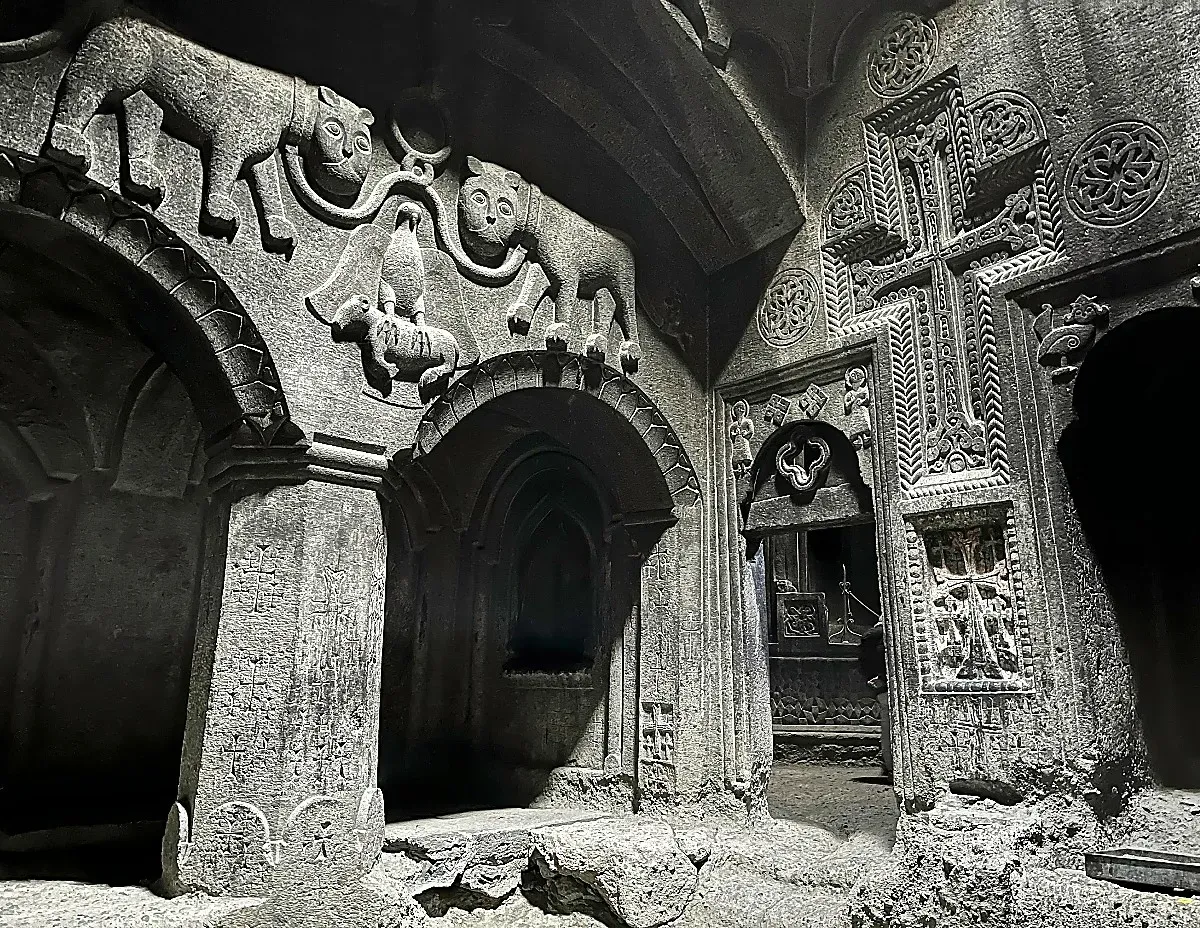
As we continued around this region we were lucky to have a kind driver. Despite not having it on our itinerary, the driver (utilizing the translate function on his phone) suggested adding a stop for us. When we consented, he brought us to the Symphony of Stone. This place was a paved pathway through the valley we had looked down at from Garni Temple; but, what we could not tell from above was that the walls of the valley were covered in basalt pillars. Similar, though skinnier, to the ones we had seen at Giant’s Causeway we were under the impression that they only existed in that volcanic region of the world (Iceland, Ireland, etc.). It was fun to stumble into these stones, especially considering that the road was almost empty for us to stroll along. This was the opposite of our Irish experience with the pillars, which were packed to the brim with people each wanting to see the semi-unique formations.
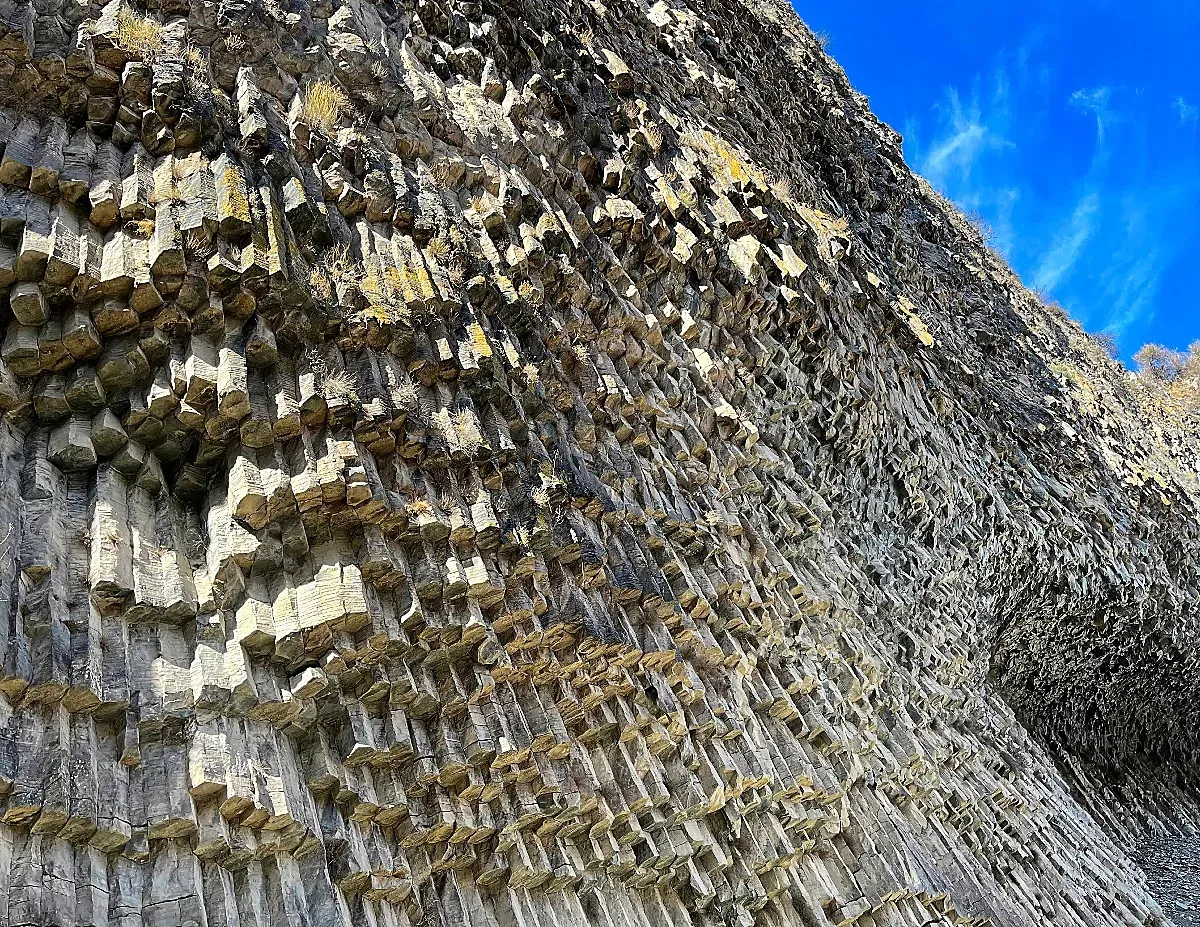
Khor Virap was the last of our visits outside of the city. This is a monastery located almost on Armenia’s border with Türkiye. It is so close in fact that as we approached we could see (it occupied a great deal of the skyline) the mountain Ararat. This mountain is iconic not only for its high visibility and beauty but also as the potential resting place of the biblical Noah’s Arc. We did not visit the mountain itself but got to see the monastery built in its shadow. As we went to leave we also encountered a wedding party arriving to celebrate, which always makes visits more fun.
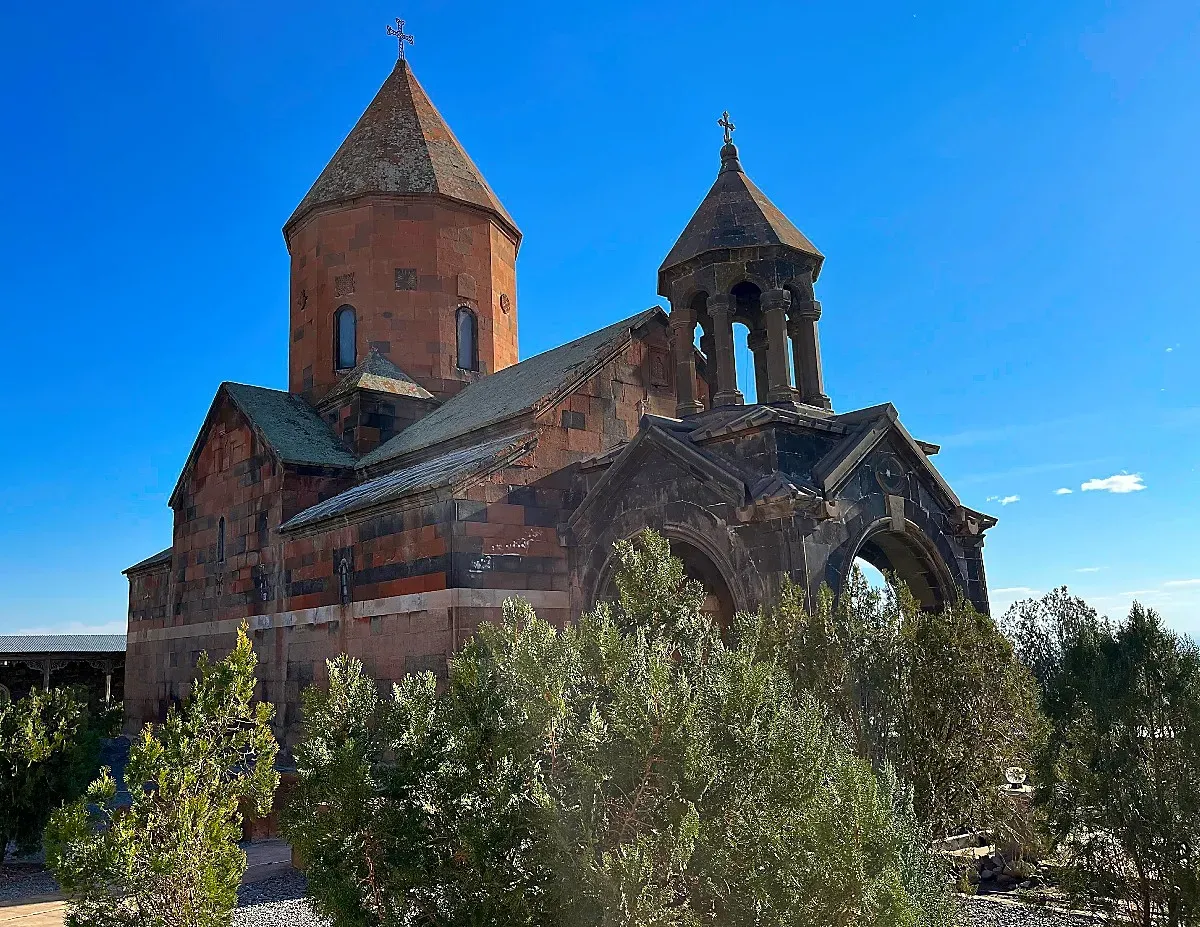
Within the city of Yerevan, we walked all over those streets and even ascended to the foot of Mother Armenia, looking out over the skyline. From Victory Park up top, we were able to descend the stairwell of the Cascade Complex. These white stone steps are decorated with art installations, fountains, and more. Constructed to commemorate Soviet Victories the décor represents the city and a chapter of the nation's history.
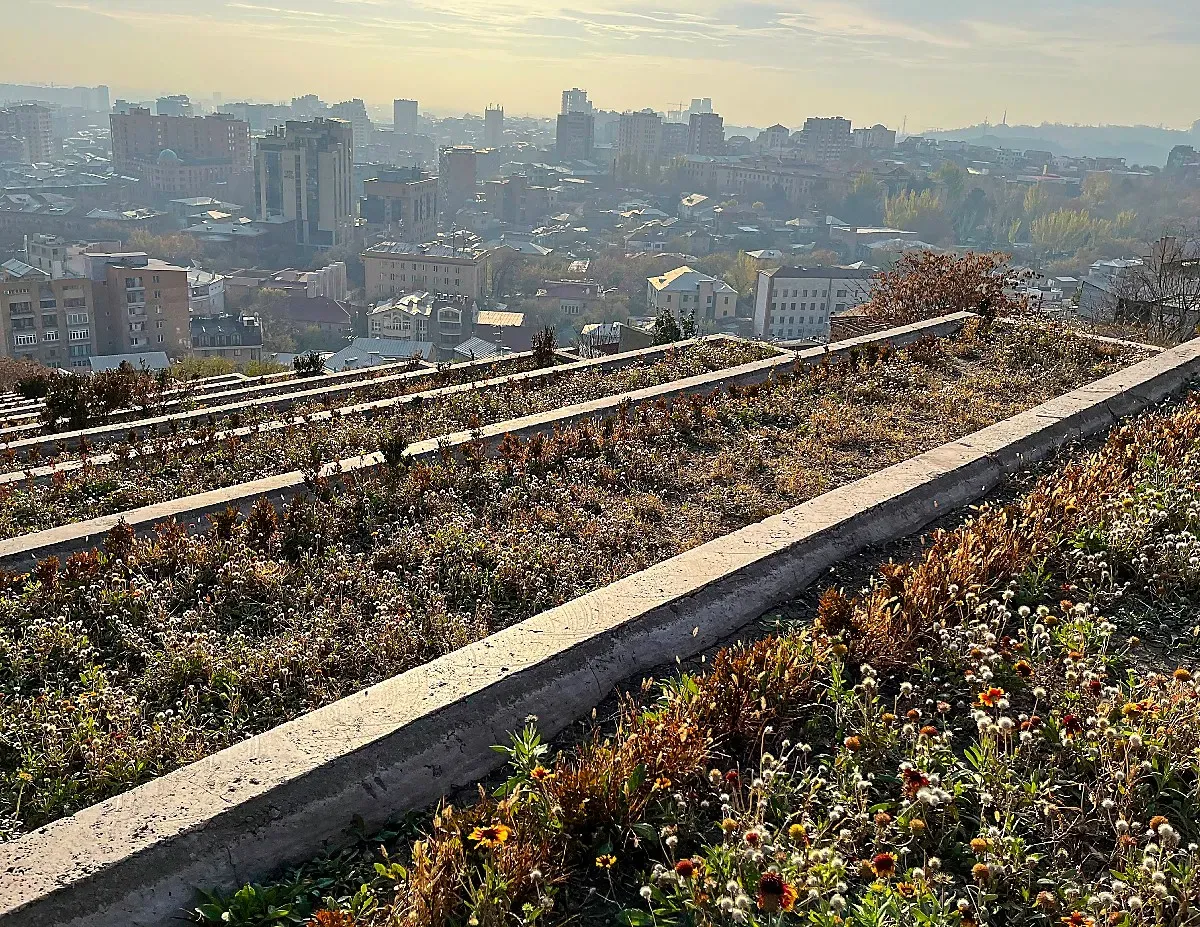
We enjoyed our time here in Armenia and appreciated being surprised and (gently) interrogated. Our bags are packed and we are on our way to the nation that invented the sauna. There is a ratio of one sauna to every two and a half people in this country. Any guesses where we are off to next?
